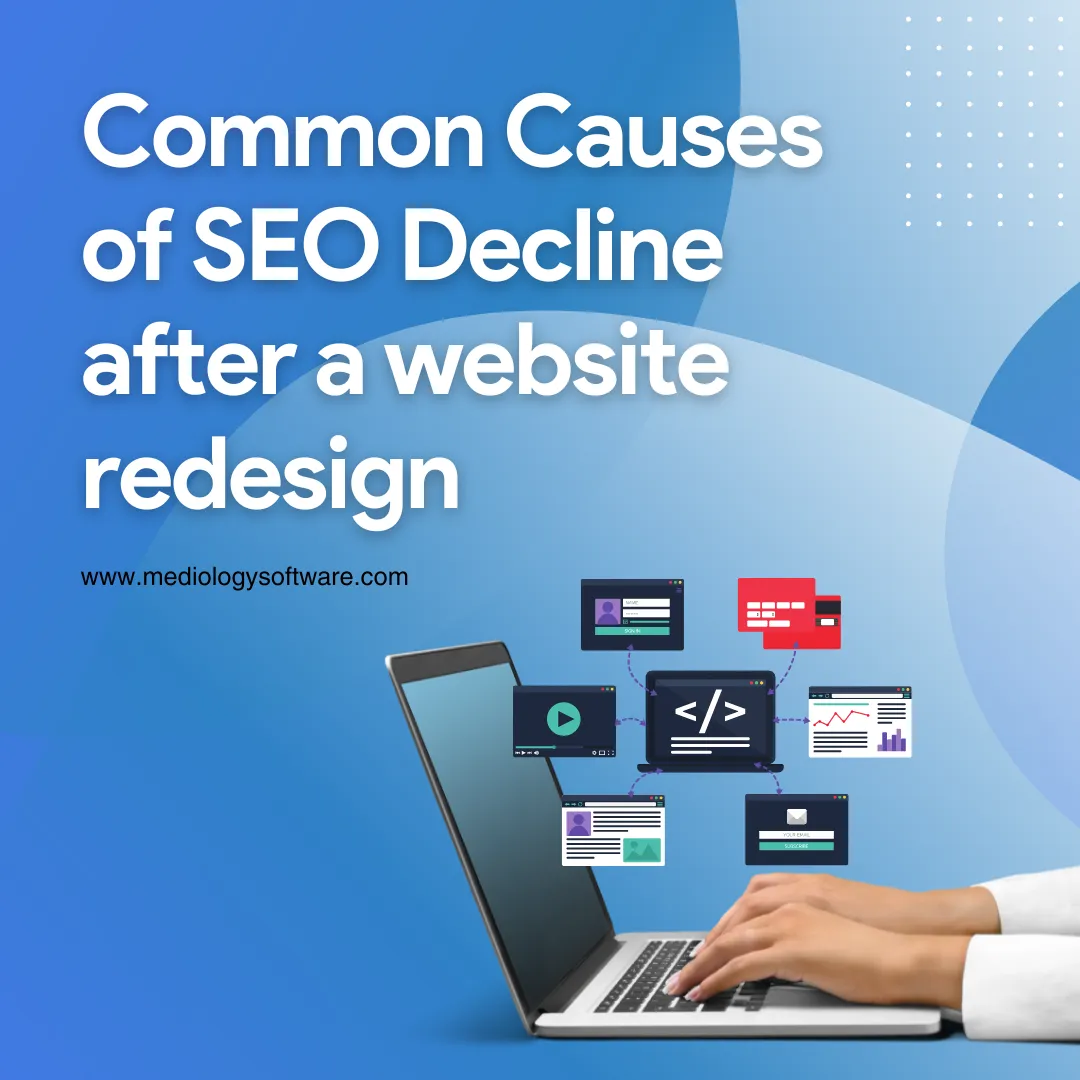A website redesign should be a chance to breathe new life into your online presence. However, many businesses experience a frustrating consequence after launch: a dip in SEO performance and organic traffic. Considering the time and resources invested in the redesign, this can be a major blow. But fear not! Understanding the common culprits behind post-redesign SEO decline empowers you to take corrective action and get your website back on track.

Let’s explore the seven key areas that can wreck your SEO after a website redesign, along with actionable steps to diagnose and fix the issues. We’ll also explore the importance of a more nuanced audit encompassing internal links, backlinks, and keyword rankings to ensure a comprehensive SEO recovery plan.
The Big Seven: Culprits Behind Your SEO Decline
- Domain Change: While uncommon, completely changing your domain name throws a curveball at search engines. They need to re-evaluate your entire website, potentially impacting rankings.
- Solution: If a domain change is unavoidable, ensure meticulous planning. Utilize 301 redirects to signal to search engines that your old pages have permanently moved to the new domain. This helps maintain link equity and SEO value.
- New URLs and Missing 301 Redirects: Shifting your website’s URL structure can be a big SEO move. Without proper redirects, search engines see your old pages as broken links, leading to crawl errors and a drop in rankings.
- Solution: Implement 301 redirects for all old URLs that have changed. This tells search engines where users should land for the intended content. Tools like Google Search Console can help you manage redirects effectively.
- Page Content (Removal/Additions): Content is king in SEO. Removing valuable content inadvertently weakens your website’s relevance to specific keywords and topics. Conversely, adding poorly optimized content dilutes the overall SEO strength.
- Solution: Carefully evaluate content changes before launch. Ensure all high-performing content finds a place on the new website, potentially with enhanced optimization. Analyze the new content for keyword relevance and optimize it accordingly.
- Removal of On-Site Keyword Targeting (Unintentional Retargeting): Website redesigns can unintentionally remove crucial on-page SEO elements like title tags, meta descriptions, and header tags. These elements signal keyword relevance to search engines.
- Solution: Conduct a thorough SEO audit of your new website. Pay close attention to title tags, meta descriptions, and header tags, ensuring they accurately reflect the content and target relevant keywords.
- Unintentional Website Performance Changes (Core Web Vitals & Page Speed): Google prioritizes user experience, and website performance is a key factor. A redesigned website with slower loading times or usability issues can see a rankings decline.
- Solution: Test your website’s speed and performance using tools like Google PageSpeed Insights. Address any issues that may be hindering user experience, such as large image sizes or excessive code. Pay attention to Core Web Vitals metrics (Largest Contentful Paint, First Input Delay, Cumulative Layout Shift) as they significantly impact rankings.
- Unintentionally Blocking Crawlers: Search engines rely on crawlers to index your website. If the redesign inadvertently blocks these crawlers, search engines may struggle to find and understand your content.
- Solution: Ensure your robots.txt file is configured correctly, allowing search engine crawlers access to your website. Verify that there are no accidental blockages in place, such as through code or server settings.
- Missing Internal Links: Internal linking helps search engines understand the structure and hierarchy of your website. A redesign can disrupt this internal linking structure, impacting how effectively search engines crawl your content.
- Solution: Revisit your internal linking strategy post-redesign. Ensure key pages are well-linked to from relevant internal sources. Utilize a logical and user-friendly linking structure that guides search engines and users through your website.
A website redesign can be a transformative experience, but neglecting SEO considerations can lead to a plunge in organic traffic. By understanding the common pitfalls and taking proactive measures, you can ensure a smooth SEO transition.


